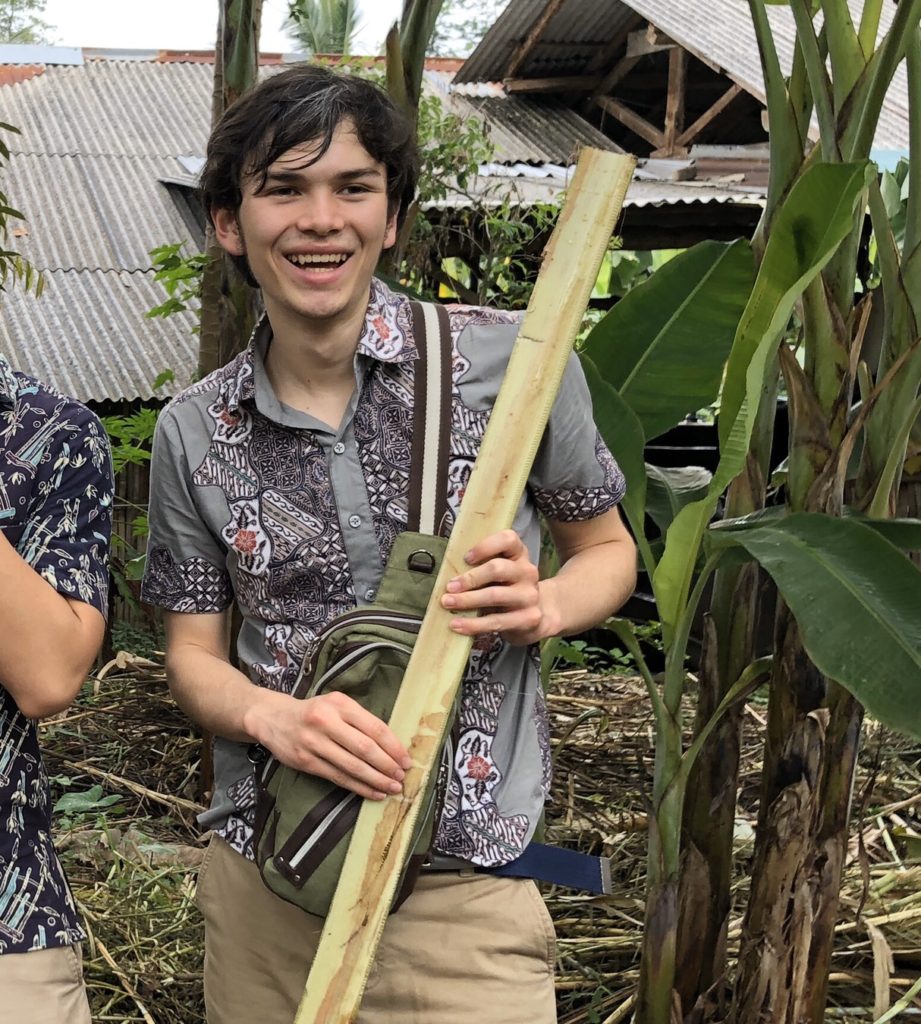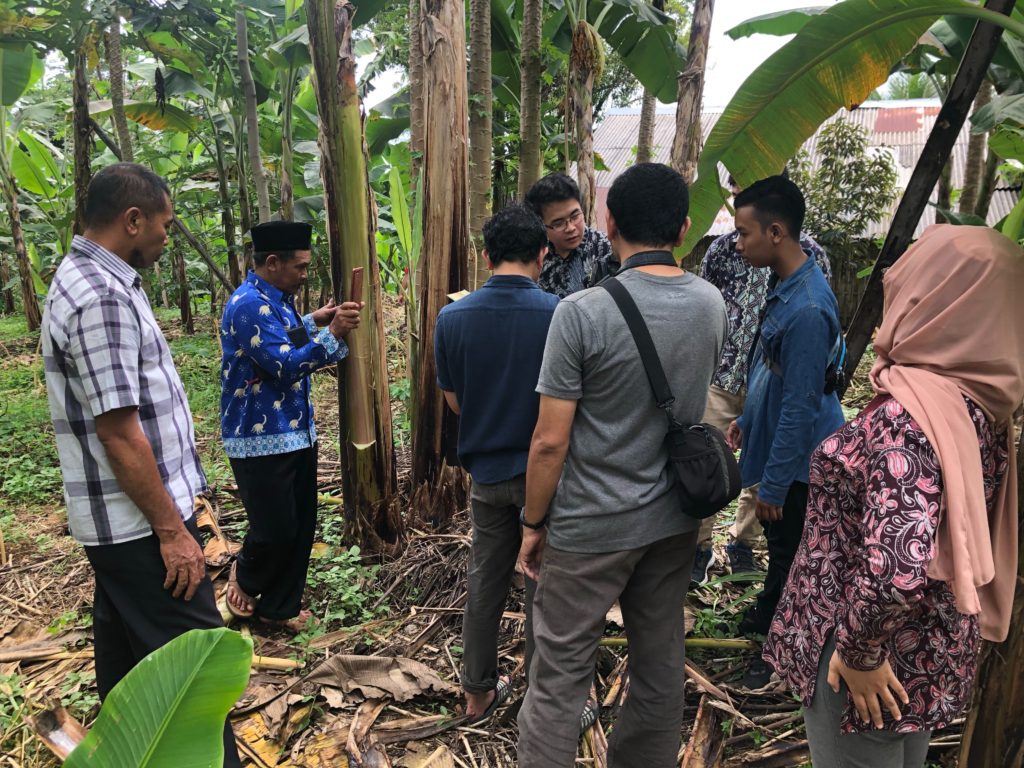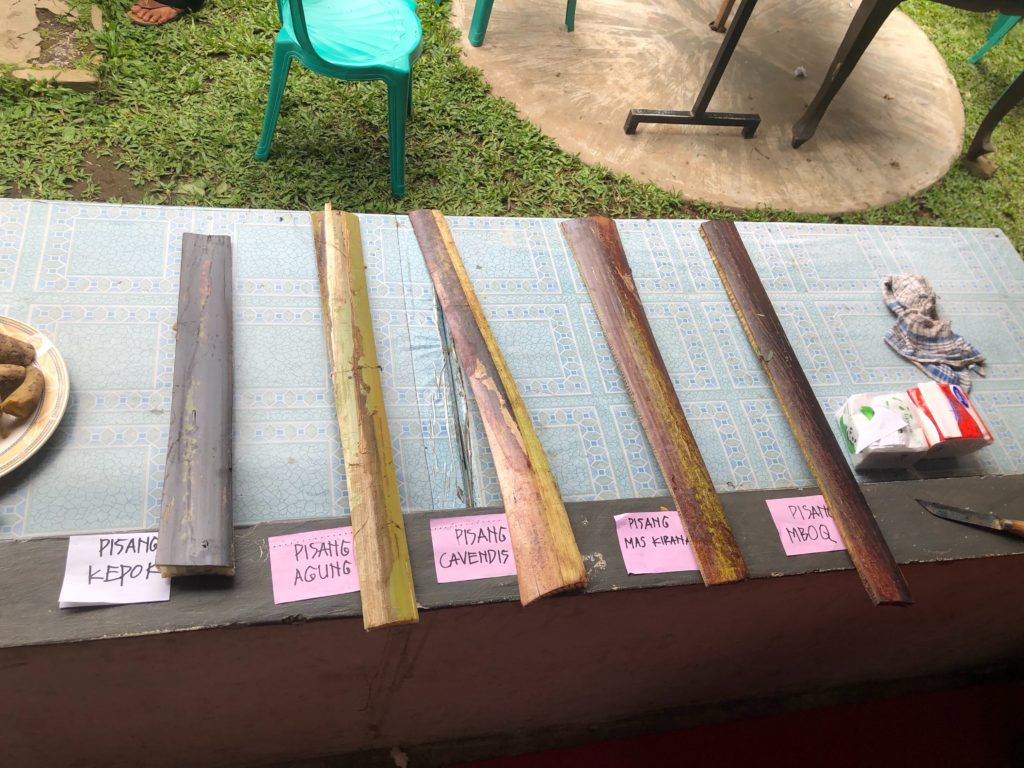Using Banana Stems to Create Eco-wraps: Interviewing Daniel, an activist who participated in Hult Prize
Interview Vol.10 features Daniel, an activist who won in the Hult Prize at ICU and is currently working on implementing his business ideas. We asked him how he came up with the idea of using banana stems to create eco-wraps, his trip to Indonesia, and his thoughts on environmental issues.

Q1. What do you do as an activist?
I came up with the idea of creating eco-wraps using banana stems during the competition period in the Hult Prize at ICU. Japan consumes an enormous amount of plastic and the yearly food loss is approximately 6 million tonnes. When comparing this amount to the amount of food aid (3.9 million tonnes) distributed by the UN, it is just absurd.
Most of the plastic collected is combusted, emitting CO2 during the process, which is detrimental for the environment.
I have two thoughts on this issue. One is to create wraps without using the main component of plastic: oil. The second is to create wraps that can preserve food for a longer period of time. I believe that this can contribute to reducing food loss.
In order to fulfill these two desires, I came up with the idea of using banana stems. In Canada and America, beeswax wraps are quite popular, but they also damage the environment when cutting down trees to collect fibers. On the other hand, since banana stems are often thrown away, it would be more sustainable to use banana stems as an ingredient for creating wraps instead of cotton and linen. It would be beneficial for local farmers if we buy the disposed banana stems from them.
It is a two-way approach to solve both the plastic issue and the food loss issue.
Q2. When did you start your activism?
I started planning this idea in September, 2019, when the theme of the Hult Prize came out. The theme of that year was “business that makes a positive impact on the environment with every dollar earned.” Since I was interested in the environment, I was intrigued by the project. I had the idea of utilizing bananas at the back of my head, and after a few twists and turns, I finally came to where I am right now.
Q3. How did you come up with the idea?
I first tried to make bioplastic out of banana starch. However, since the blending ratio of banana starch was lower than expected, I changed course to go along with the new idea of combining beeswax wraps and bananas.
Q4. After this, what happened to the idea presented in the Hult Prize?
We won at Hult Prize ICU and although we were not able to win at regionals, we made it in the top 6 out of 70 teams. We were meant to travel to Bangkok for the competition, but unfortunately due to the coronavirus outbreak, the trip was cancelled around 2~3 days before take off. Instead, in early March, we participated in an online competition in Tokyo.
Q5. Where did you come up with the idea to use banana stems?
When I used to live in Indonesia, I read a biography on a person who was stationed in Indonesia in the 1990s. In those days, when the factories were not well-regulated and there were not enough essential supplies, they used banana stems as an alternative source. This story was really inspiring, and when I was thinking about business that is good for the environment, I knew I had to use bananas in the process.
Then, I found research on creating plastic out of banana starch, which is how I came up with the idea of creating bioplastics. After much trial-and-error, I decided to create a beeswax wrap using the fibers of banana stems.
This is not well known, but bananas are grown on grass, not trees. This is why bananas grow within a short span of just over a year. Banana stems are very flexible and can be used for various purposes.

Q6. How did you feel when you first started?
I started off without thinking too much. Eventually, while making prototypes for the competition, I started to think that it can be commodified, which was when I felt the need to win. Also, traveling to Indonesia helped me to become more passionate about my work.
Q7. You mentioned that you went to Indonesia with your team for Hult Prize. What did you do there?
After winning the ICU rounds, we decided to go to Indonesia to learn more about bananas. I realized then that each banana stem’s property is completely different. I was also curious to find out how the farmer’s would react to this project idea.
We got in contact with NGOs and decided to visit Lumajang, a place located in East Java of Indonesia and famous for producing bananas. We presented our business idea in the village’s meeting. They showed us cloth made out of bananas, and we were able to extract 5~6 different banana fibers. I did not think that there would be much difference between the different fibers, but they were completely different and I was surprised. For example, Pisang Kepok has fibers that are extremely sturdy and can be used to fly kites. In contrast, the stem of Mas Kirana is very soft.
We also had a chance to research regional cultures regarding bananas at an agricultural education NGO located near Jakarta, which teaches students coming from various parts of the Indonesian archipelago.

Q8. Why did you choose Indonesia?
The top producers of bananas in the world in order are India, China, and Indonesia. One of the reasons I went to Indonesia is that I personally love the country, but there are other reasons: banana cloths are still not common, there is a larger number of small-scale farmers, and it would be great to aid the people.
Q9. Was it an easy procedure to extract fibers from banana stems?
We researched the procedure beforehand in Japan. We only needed to extract small amounts, so we used the abaca cloth from Okinawa as a reference. We first boil the bananas in alkaline water, then rub the edges with bamboo fragments to retrieve cloth fiber. However, when extracting large quantities of fiber, a machine is required.
Q10. How was working as a team like during the competition period of the Hult Prize?
It was challenging. All of us had various values and we were busy with other club activities and school work, which made it harder to adjust our schedules. Sometimes I thought it might be quicker to do all the work by myself.
One advantage of working as a team is that you can help each other out. There is an African proverb, “if you want to go fast, go alone. If you want to go far, go together” which perfectly sums up how I feel.
Q11. How did you specifically go through the process of preparing for the Hult Prize with your teammates?
I think it was good that our majors were all different within the team. I study public policy, environmental studies and a bit of international relations, so I mainly researched about Indonesia. A different teammate was majoring in chemistry, so he worked on researching the properties of bananas. A business major worked on polishing the presentation and accounting. The last was studying international relations and business, so he supported everyone.
When we split up each of the tasks based on our majors, our academic expertise is put to the test and each of us feel like we are taking part, which can help mentally.
Q12. When do you feel motivated about your work?
I feel motivated when I share my work with others and when we have a common understanding over it. I am a natural worrier, so even if we did have a plan, I was often worried whether we were truly supporting the people in need. However, the people in Indonesia showed their enthusiasm for the project, which boosted my motivation.
There are various types of social entrepreneurships, but I think it will be great if we can make a contribution to society and make profit at the same time. I feel motivated when there is not only financial profit, but when I feel that people are satisfied with the outcome.
Q13. Please share what you realized through your activism and a message for ICU students.
We often think that we can research anything on the internet, but through activism, I realized that there is information that can only be attained through fieldwork. You must examine and verify what you want to know, with your own eyes. I also noticed the advantages and disadvantages of working as a team, and reassessed the alarming waste issue in Indonesia.
Q14. What is your message towards society?
I personally believe that it would be great if everyone can take interest in environmental issues. Since people cannot live without a healthy environment, people should be aware and have a sense of the crisis. We should also take notice of the issues revolving around oneself and others, to gain a different outlook and acquire personal moral principles. Actions do not have to be grand, and people need to realise that +0.1 is better than +0, and to not become too much of a perfectionist. Also, having a little pride in yourself for taking action can be good as well. However, I believe that there is also a need to accept any criticism and to be humble.
Q15. Is there anything you want to do next? Any challenges or future plans?
My goal right now is to create a satisfactory prototype. I want to create and sell products that are not flawed in quality. I believe that there is a lot to learn from marketing. Eventually I would like to branch out from Japan, to help countries and communities that are struggling to preserve food in unsanitary conditions. Someday I believe we will be outsourcing banana stems from Indian companies and establishing a company to create eco wraps. Once that day comes, I would like to invite all those that helped me in Indonesia to express my gratitude.

1.https://www.instagram.com/agrowrap/
2. https://www.instagram.com/iwantfood_notplastic/